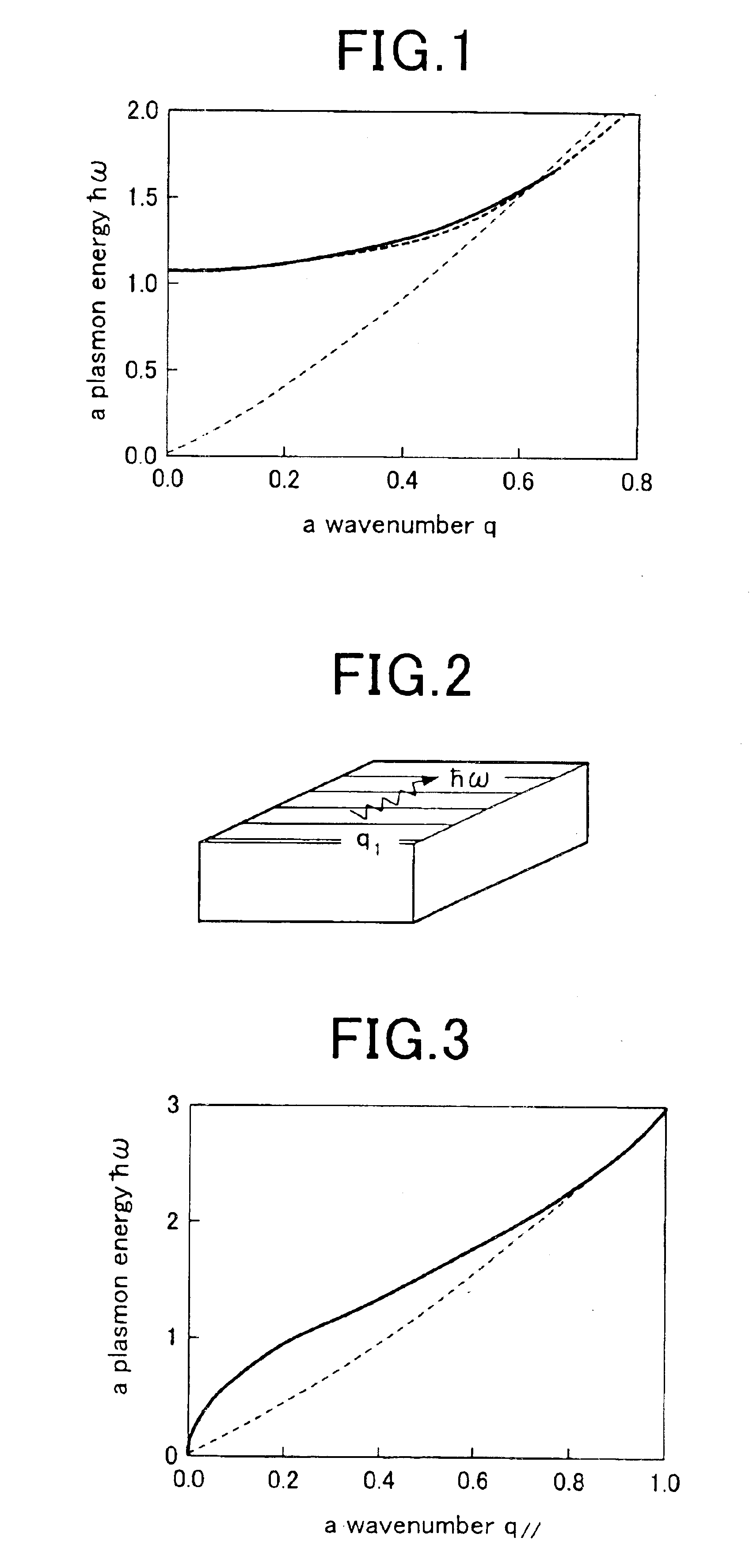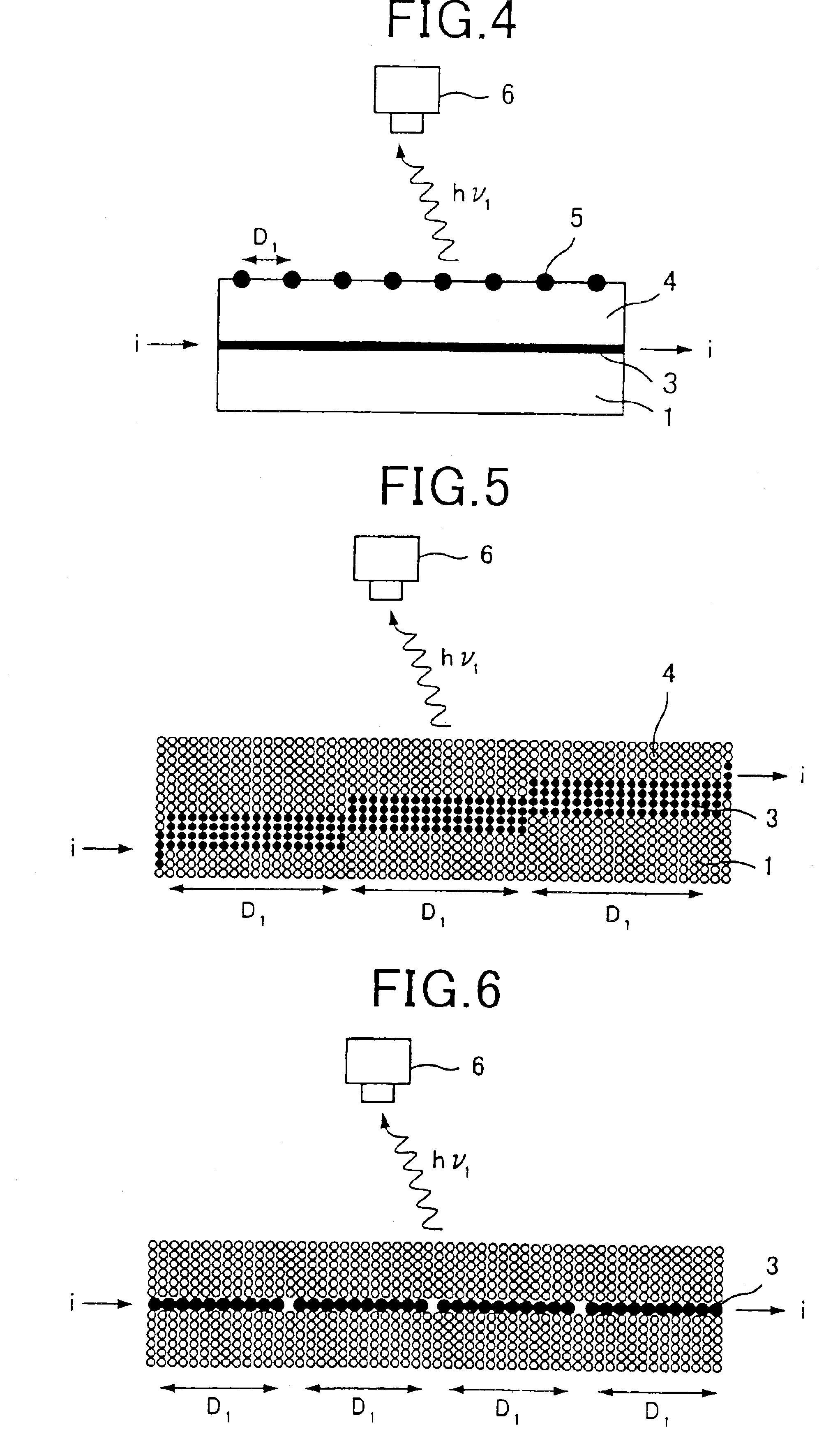Low-dimensional plasmon light emitting device
- Summary
- Abstract
- Description
- Claims
- Application Information
AI Technical Summary
Benefits of technology
Problems solved by technology
Method used
Image
Examples
Embodiment Construction
[0019]Volume plasmon in a three-dimensional solid matter and surface-plasmon or Mie plasmon in the vicinity of a three-dimensional solid matter are examples of three-dimensional plasmon. On the other hand, low-dimensional plasmon is originated in fluctuation of a charge density wave, which localizes in a two-dimensional plane or a one-dimensional structure.
[0020]Dispersion of a plasmon frequency ωp(q) with respect to a wavenumber q of three-dimensional plasmon is represented by the below-mentioned formula, wherein ωp0 is a plasma frequency determined by carrier density N and effective mass m* of a solid matter, and α and β are constants, as disclosed in H. Raether, Excitation of plasmons and Interband Transitions by Electrons, Vol.88 of Springer Tracts in Modern Physics (Springer, Berlin, 1980) and Surface Science Reports 22 (1995) pp.1-71. ωp0=(4π ne2m*)1 / 2(CGS) or (2π ne2m*)1 / 2
[0021]a frequency of bulk-plasmon a frequency of surface-plasmon
ωp(q)=ωp0+αq+βq2+O(q3)
[0022]The...
PUM
 Login to View More
Login to View More Abstract
Description
Claims
Application Information
 Login to View More
Login to View More - R&D
- Intellectual Property
- Life Sciences
- Materials
- Tech Scout
- Unparalleled Data Quality
- Higher Quality Content
- 60% Fewer Hallucinations
Browse by: Latest US Patents, China's latest patents, Technical Efficacy Thesaurus, Application Domain, Technology Topic, Popular Technical Reports.
© 2025 PatSnap. All rights reserved.Legal|Privacy policy|Modern Slavery Act Transparency Statement|Sitemap|About US| Contact US: help@patsnap.com



